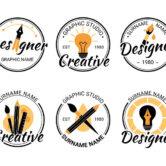Are you looking for an e-commerce marketing strategy? Did you know that last year e-commerce generated over $504.6 billion in online sales? And that’s just in the United States. By 2023, that number is expected to reach $735.4 billion. These numbers tell us one thing, loud and clear. If your e-commerce sales aren’t up, it’s not because the industry is booming. The problem lies with you.
So the question is how do you get started?
First, you need to track down the gaps in your system. Chances are, the problem lies with your products or services, your customer service, or your marketing campaigns. For most of you, the problem lies with your marketing.
Use SEO in Your E-commerce Marketing Strategy
If you haven’t heard of SEO before today, it’s time to learn a new term. SEO stands for Search Engine Optimization. It’s basically a set of mechanical strategies to improve your ranking with search engines. AI systems now power search engines like Google, Bing, and Yahoo! Although they can process massive amounts of data, they’re not a replacement for the human mind. That means they’re not a replacement yet. They’re making great strides toward mimicking human logic, but they’re not there yet. Until they do, they need your help to accurately match your website to the user’s query. When they do, you’ll see a rise in your website’s page rankings.
You can hire one of these professionals to improve your Google search rankings
When your page rankings jump, so does your website’s traffic. More traffic means more sales, which is exactly what you’re looking for. You can make SEO changes yourself with tools like the Yoast SEO plugin and the Moz SEO package. But such tools will need a professional to use them optimally for your site unless you have enough experience to use them.
Focus on existing customers
Why waste your money chasing and finding new customers when you’re not fully utilizing the ones you already have? Instead, focus your efforts on customer retention. Loyalty can have a huge impact on your bottom line. When compared to existing customers, new customers will require more spending to acquire them. Existing customers, when they visit your site, are already familiar with your brand. They don’t have a learning curve because they already know how to use your products and site. Best of all, they’re more likely to refer friends and family. Focus your efforts instead on a customer loyalty program that gives buyers an incentive to spend more when they shop. You can either create a program to increase customer sales or simply increase the number of products you sell. Your bottom line will improve.
Focus on mobile
Did you know that nearly 79% of Americans shop online, and 51% of them have purchased at least one item using their smartphone? Could you imagine that half of your revenue comes from smartphones? But how can you capitalize on that? Simply put, design your website for smartphones first. Then design for desktop. Websites designed for mobile devices require dozens of small tweaks, many of which are not even noticeable on desktop devices. Mobile devices are even more difficult to design. Get a mobile-responsive theme, if you don’t already have one. If you didn’t build the site yourself, hire a web designer to create a site that works well on both mobile and desktop devices.
You can hire one of these professionals to build your site responsive on both mobile and desktop
Use icons that show your credibility and that your site is 100% secure and protected
There are more than 1.63 billion websites in operation today. Many of them are outdated, and some are scams. Buyers face the possibility of being scammed every time they walk to their digital checkout counter. If you want to improve your sales, put their minds at ease. Use icons that prove your credibility. First, make sure your site uses a secure SSL certificate. Buyers can tell if your site is certified by checking the URL box in their web browser. If your site is certified, the word “secure” will appear before your web address. You can also add icons, such as those provided by the Better Business Bureau, VeriSign, and PayPal. Make sure these badges appear on the checkout screen and next to any forms visitors need to fill out.
Optimize Content
Content is the text on your page. Unfortunately, this is the most overlooked element on ecommerce sites. Instead, they focus on optimizing images and page layouts and forget about the words. But words are what drive your customers to buy your products. We recommend that you focus first on learning how to write good content and descriptions for your products.
Accept Different Payment Options
One of the simplest ecommerce tips and tricks is to offer more payment options. All digital stores offer credit card options. Make sure your card includes Mastercard, American Express, and Discover. The more options you offer, the less likely you are to lose a potential customer due to payment conflicts. That’s why you shouldn’t stop using credit cards. PayPal is also a must-have these days. You might also want to check out Apple Pay and similar services.
Focus on Public Holidays
Historically, the holidays are the times when users are most willing to spend money. If you create marketing campaigns specifically for public holidays, you’ll see a greater return on your investment. Black Friday and public holidays are absolute musts.
Showcase Your Best Sellers in Each Category
You want to get the most out of what you already have available. That’s why we recommend focusing on your existing loyal customers. That’s also why we suggest putting your best-selling products front and center. There’s a reason these products sell so well. Take advantage of that. Place them directly under the main image at the top of your page, so that all your site visitors can see them. It’s a surefire way to boost your sales.






